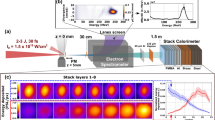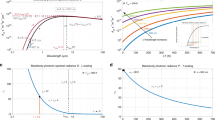Abstract
REFERRING to the experiments mentioned by the present writer in recent issues of NATURE (January 30, p. 153; March 27, p. 448), and other work not yet published, we have had on several films and on one plate lines of wave-lengths 1.040 and 1.0381 respectively. It seemed impossible to regard these lines as being due to mercury, since either the HgLα1 or the HgLβ1 line has not been present. The films and plate represented good photography, and the exposures were over a wide range, so that these lines fell about midway.
This is a preview of subscription content, access via your institution
Access options
Subscribe to this journal
Receive 51 print issues and online access
$199.00 per year
only $3.90 per issue
Buy this article
- Purchase on Springer Link
- Instant access to full article PDF
Prices may be subject to local taxes which are calculated during checkout
Similar content being viewed by others
Change history
01 May 1926
“The Problem of X-Ray Line Intensities”: NATURE of May 1, p. 622. Paragraph 3, line 4, for 0.030 read 0.093; line 12, for 80·04 cm. read 8·04 cm.
Rights and permissions
About this article
Cite this article
LORING, F. The Problem of X-ray Line Intensities. Nature 117, 622–623 (1926). https://doi.org/10.1038/117622a0
Issue Date:
DOI: https://doi.org/10.1038/117622a0
Comments
By submitting a comment you agree to abide by our Terms and Community Guidelines. If you find something abusive or that does not comply with our terms or guidelines please flag it as inappropriate.



